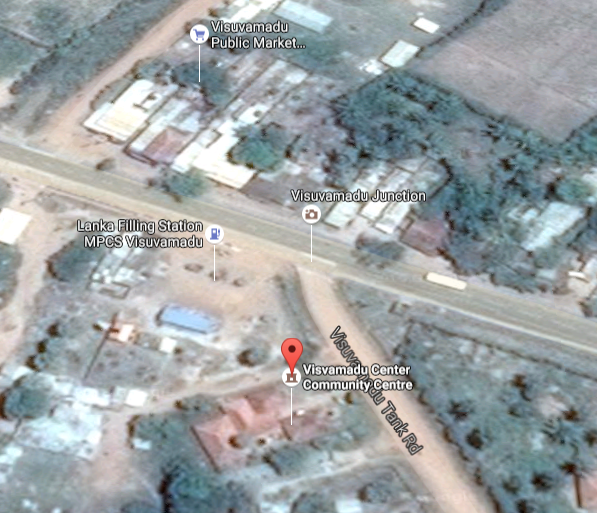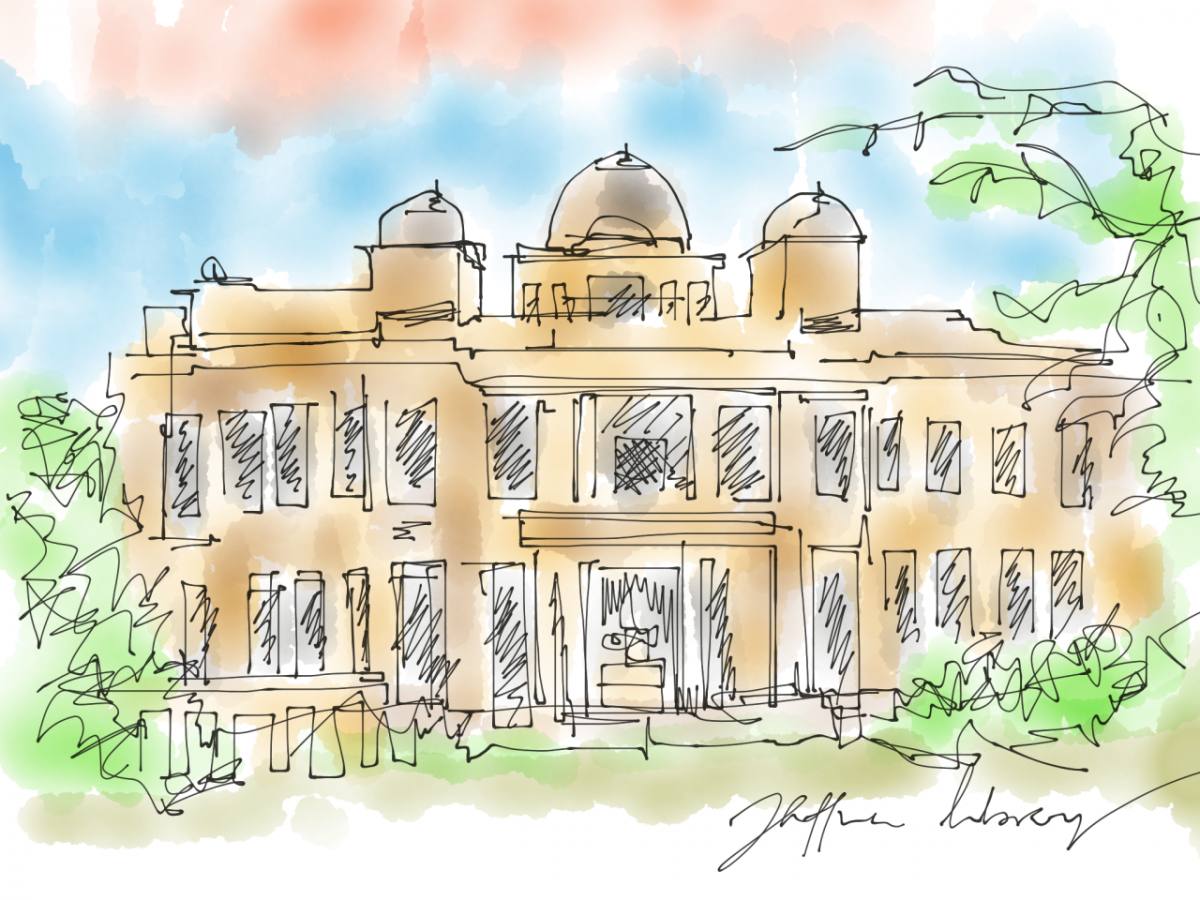| Illustration: Sugumaran Karthikeyan @subatomic |
In December 1995 the Sri Lankan army took control of Jaffna, which before that time had been held by the LTTE for many years. The Indian “peace keeping” force had briefly captured it in 1987.
The armed resistance retreated into the Vanni area, situated below the Jaffna peninsula, covering about 7650 square kilometres. The Vanni, held by the LTTE from 1995, would go on to become the de facto state of Tamil Eelam until the start of the final offensive in 2008.
The Visvamadu Library was built in 2006 near the corner of Visvamadu Tank Road and Parantan-Mullaitivu Highway (see satellite image below). At least 50,000 books were brought there by the LTTE from the Maaveerar Padippakam [??????? ?????????] public library in Kondavil, Jaffna via a boat through the Kilali Lagoon. The Tigers took control of this lagoon in the 2000 battle for the Elephant Pass. Numerous archives including those printed on dried palmyra leaves and newspapers from as early as the 1915 were also brought to and kept in this new library.
 |

When the Government famously burned down the Jaffna Public Library in 1981, there were a number of books that were on loan. The books were collected and had been kept in the Maaveerar Padippakam before later being transferred to Visvamadu. They proudly carried the Jaffna Library stamp yaal noolagam [???? ?????? Jaffna Library) inside their covers.
Initially the building was a small hut with a thatched roof. It was eventually built into a solid structure, doubled up as a community center. We had 600 members, 200 volunteers and seven paid staff. The membership fee, if you could afford it, was 60 rupees. There was a fine of one rupee per day for late returns, again only if the borrower could afford it.
The centre ran from 8-4pm weekdays and 8-6pm on weekends.
The Dewey Decimal Classification system was used and we had books for each class: computer science, information & general works, philosophy & psychology, religion, social sciences, language, science, technology, arts & recreation, literature, history & geography. These included books in Sinhalese, Tamil and English.
Also included in the library’s possession were:
- books in English and Tamil that taught Hindi, Sanskrit, Sinhalese and French.
- original handwritten writings of Eelam Tamil literary figure S. Kanapathipillai’s on the origins of the Tamil language.
- technical blueprints for methods for treating the water in Elephant Pass so that it could supply Jaffna with drinking water.
- research documents detailing Mankulam as the future economic hub of Tamil Eelam.
- Tolkappiyam*, an ancient text of Tamil grammar, linguistics and literary criticism initially written on palmyra leaves and turned into books.
When we started operating the library we put a request out to the public to give us any archival material they had, promising we would keep it safe for them. We even offered to pay people, but no one accepted money from us. Many people looked through the possessions of their ancestors in suitcases and cupboards and handed over their precious documents to us. In this way we collected original handwritten historical writings, poems, research and thoughts.
In 2003 I started working on a proposal for a mobile library. Our plan was to apply to an international non-governmental organization (INGO) working in the Vanni for funding to buy a bus. This never eventuated. In September 2008 when large-scale displacement started, we wanted to ensure that children and students still had access as schools, which we knew would soon stop operating. So we started the mobile library on the back of a motorbike, a pushbike and Jegan uncle’s truck – depending on what was available.
We prepared 20 boxes of books and distributed them to different villages via our volunteers. We would swap the boxes once a week. These efforts were very much welcomed by the community. It provided mental relief for our volunteers and the community and allowed us to continue to work with them.
By 15 January 2009 we had to vacate the area and the library as the Sri Lankan army were about two kilometres away. The Killinochchi General Hospital (operating in the Visvamadu Mahavittiyalam School) was located nearby. The army shelling in our area, which had started on 13 January had already claimed civilian lives. As the scale of displacement had become too great, we stopped the mobile library project at the same time. Sometimes people were displaced repeatedly on a single day.
We had to leave all the books as they were. Not wanting to lose certain archival material we wrapped them in plastic bags and used a tractor to move them to a house (location withheld) in another village.
I never went back to the library or saw any of the archival material again.
- Kumaran
*What is Tolkappiyam
“Tolkappiyam at least in parts is the earliest work in Tamil. It is a book on phonology, grammar and poetics. Therefore it implies the prior existence of Tamil literature…The most important aspect of this literature is the distinction between what is called akam and puram the exterior or the outer and the interior or the inner. I prefer to call them the poetry of the phenomenon and the poetry of the noumenon. The inner core of truth of human life is akam or Love. There is a rule that in akam poetry no names are to be mentioned… As against this, puram or the poetry of the phenomenon shows the experience of the varying individuals in this world, an experience which can be often dated as belonging to the historical persons…Ultimately akam and puram are as the inner palm of the hand and its back…”
T. P. Meenakshisundaram, paper presented at First International Conference Seminar of Tamil Studies,Kuala Lumpur, Malaysia, April 1966
Note: We believe that this is the first time anything has been written in Tamil or English about the Visvamadu Library. Tamil Survival Stories has an understanding of what may have happened to the 50,000 books and the archives detailed in the below story however is unable to disclose details due to the safety concerns. What we can say is that a number of books in the library were destroyed. Whether this was in the hundreds or thousands is not known. The library can be seen in the above google maps image as ‘Visvamadu Center Community Centre’.
Tamil Survival Stories is a photographic journey into the survival of the Eelam Tamils, the preservation of their identity across the globe, and the role of women in this story.
